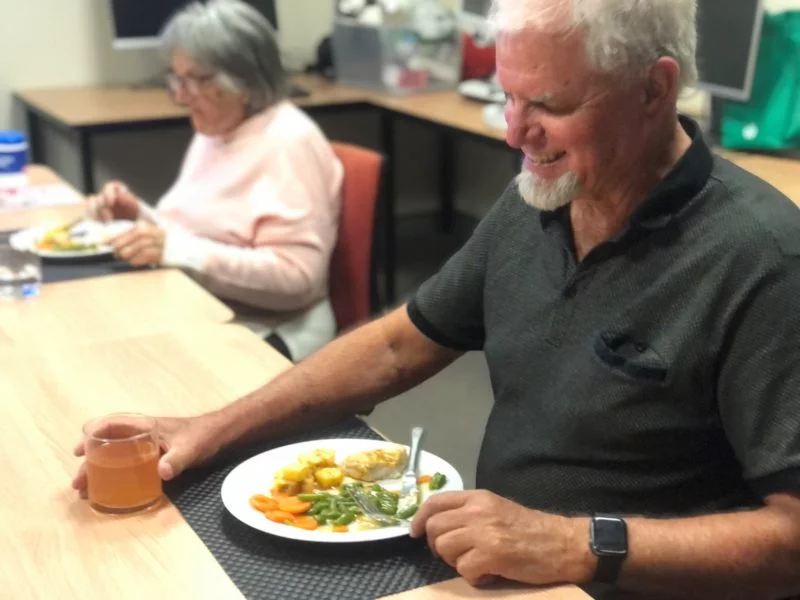Eating with other people is one of life’s simplest pleasures, whether that’s as a family, as a couple or with a large group. Many people with vision impairment or blindness can find it challenging.
Our three-hour Dining Skills course offers guidance, so you can eat with confidence and avoid any potentially embarrassing pitfalls.

The courses run frequently – visit our Adult Group Programs page for more information and to express your interest in attending.
Subjects covered during the three-hour session include:
Clock reference system

The easiest way to tell where food is on your plate is to use the clock technique. This is where you are advised where the food is on your plate, using the clock reference system:
• 12:00 at the top (the edge that is farthest away from the person eating).
• 6:00 at the bottom (the edge that is closest to the person eating).
This can help form a mental picture of where each food item is located on the plate. It is also helpful to trail to items, outside of your plate, such as to find the glass, or condiments like pepper or salt. Sliding or trailing your hand across the table to the glass will also prevent accidentally knocking over unexpected items on the table.
Centring

This is where you discreetly direct food into the middle of your plate to avoid any food from spilling over the edges.
- Use the fork and/or the knife to regularly move food back from around the the edges of the plate to the centre.
- The tip of the knife can also give you an indication of the size of the food item that needs cutting.
- The weight of food on your fork or spoon can give a rough idea about the size of the portion.
Drink pouring techniques

There are several tips to help you with liquid pouring techniques.
- One option is to use a liquid level indicator, this will either vibrate or make a noise when liquid touches it. They can be bought from the VisAbility resource centre shop online.
- When using a jug to pour, make sure your slide it down the side of the glass until the neck rests on the glass edge. This ensures that you do not completely miss the glass when pouring.
The VisAbility Dining Skills course ends with a meal that everyone enjoys together.
